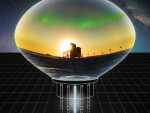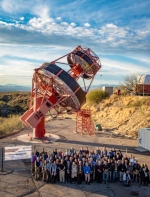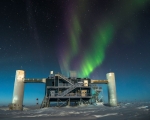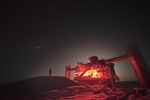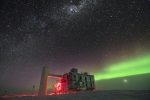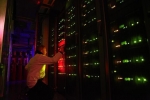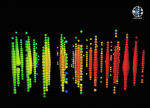On December 8, 2016, a high-energy particle called an electron antineutrino hurtled to Earth from outer space at close to the speed of light carrying 6.3 petaelectronvolts (PeV) of energy. IceCube had seen a Glashow resonance event, a phenomenon predicted by Nobel laureate physicist Sheldon Glashow in 1960.
Scientists in the Cherenkov Telescope Array (CTA) consortium have detected gamma rays from the Crab Nebula using the prototype Schwarzschild-Couder Telescope (pSCT), proving the viability of the novel telescope design for use in gamma-ray astrophysics. The announcement was made today by Justin Vandenbroucke, associate professor at the University of Wisconsin–Madison, on behalf of the CTA Consortium at the virtual 236th meeting of the American Astronomical Society (AAS).
Some of WIPAC's computing resources are beingused to simulate protein folding of SARS-CoV-2, the coronavirus responsible for COVID-19. How proteins fold into three-dimensional shapes is difficult to predict but has big effects on biological interactions, like those between a virus and its host. These simulations will help researchers understand how the virus compromises human immune systems and reproduces.
The 36th International Cosmic Ray Conference (ICRC) kicks off tomorrow in Madison, WI. ICRC is a physics conference organized biennially by the Commission on Astroparticle Physics (C4) of the International Union of Pure and Applied Sciences (IUPAP) in which physicists from around the world present the results of their research in astroparticle physics.
IceCube, the Antarctic neutrino detector that in July of 2018 helped unravel one of the oldest riddles in physics and astronomy — the origin of high-energy neutrinos and cosmic rays — is getting an upgrade.
Since cosmic rays were discovered in 1912, scientists have sought the origins of these mysterious particles. In September 2017, a flash of blue light in the ice deep beneath the South Pole set researchers on a path to resolving this century-old riddle.
In an effort to fill in the blanks of the Standard Model of particle physics, science has been conducting a diligent search for a hypothesized particle known as the “sterile neutrino.” Now, with the latest results from an icy particle detector at the South Pole, scientists are almost certain that there is no such particle.
Sorting through the billions of subatomic particles that zip through its frozen cubic-kilometer-sized detector each year, researchers using the IceCube Neutrino Observatory have gathered powerful new evidence in support of 2013 observations confirming the existence of cosmic neutrinos.

